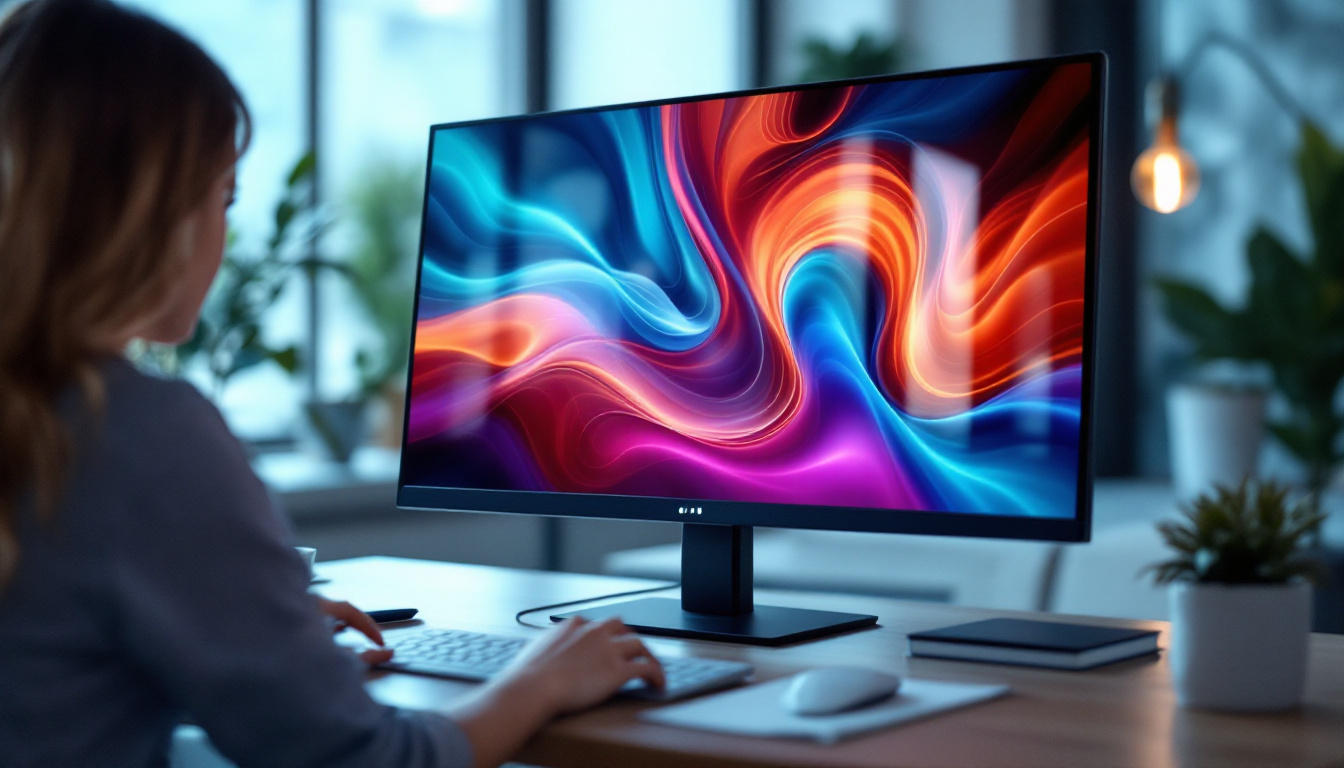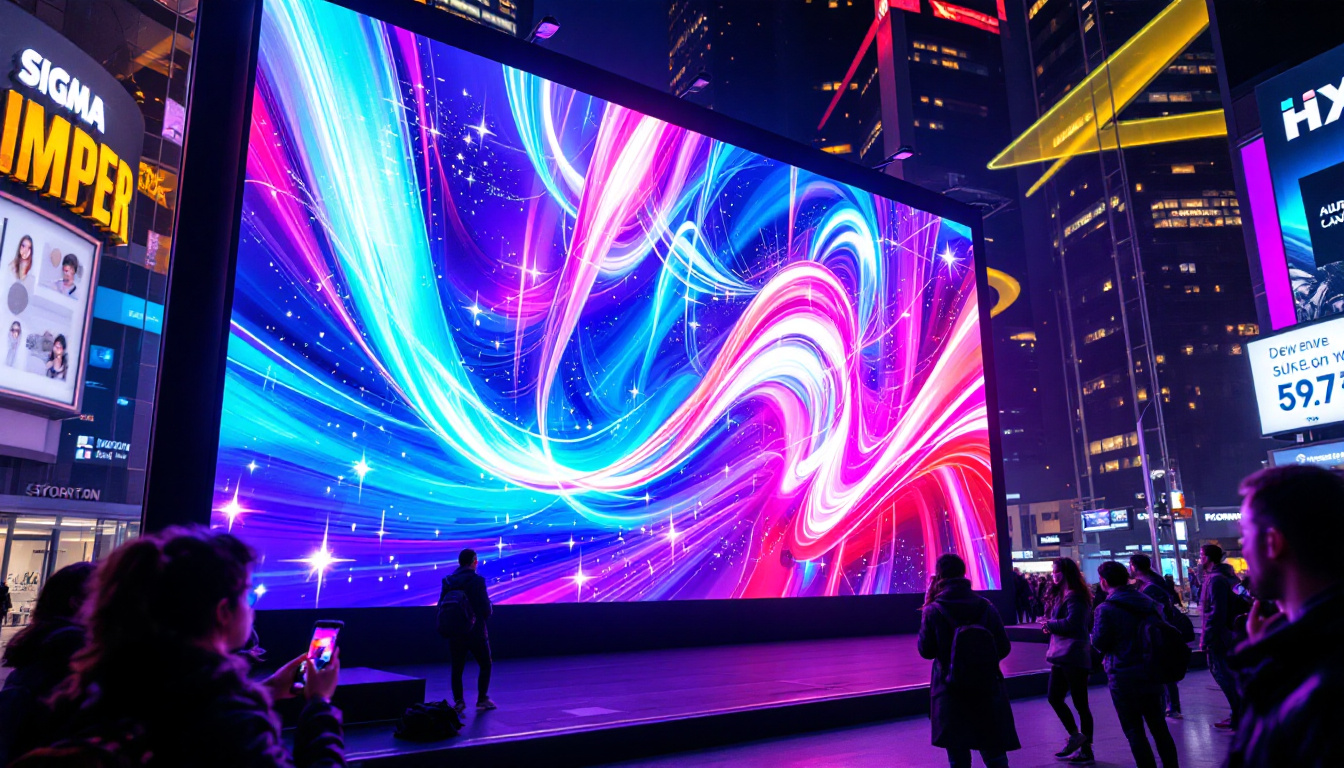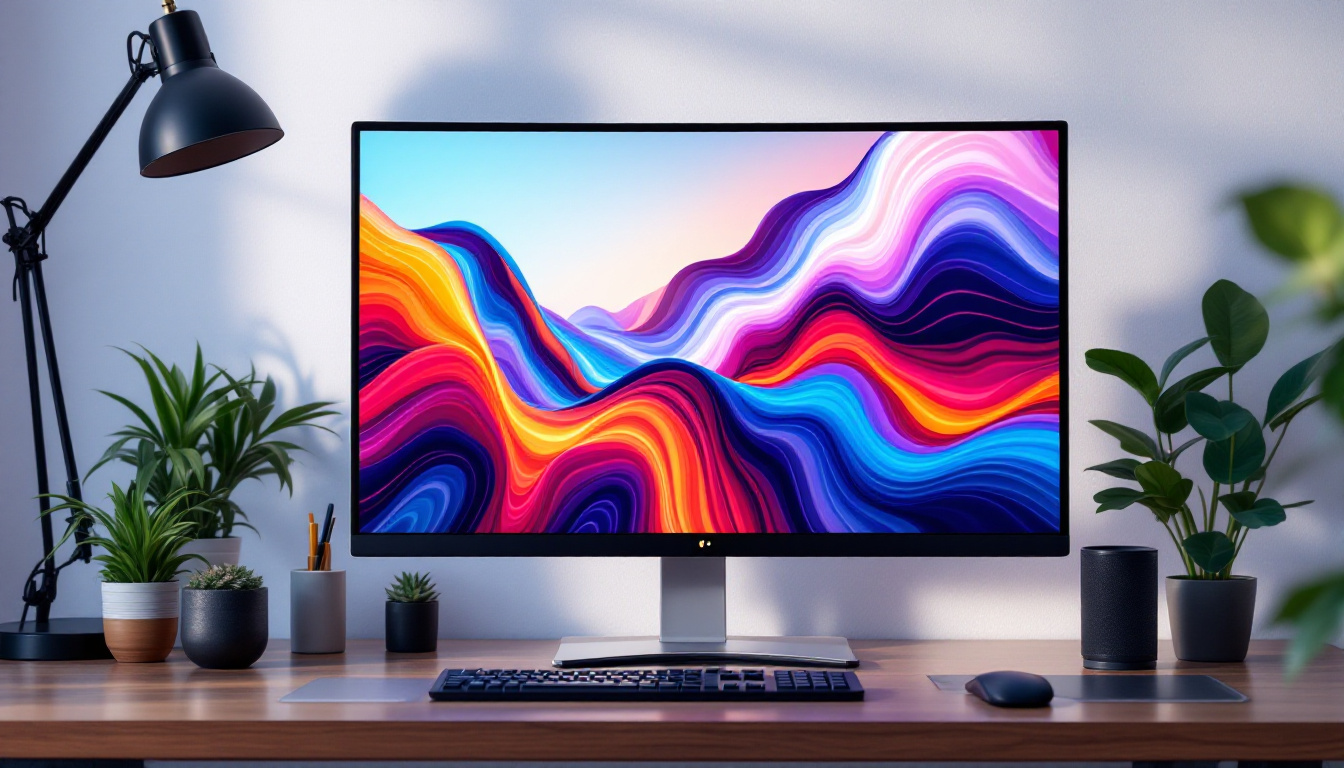In today’s fast-paced digital world, the demand for high-quality display technologies is ever-increasing. Among the various options available, the 27-inch touch screen monitor with LED display stands out as a versatile choice for both personal and professional use. This article delves into the intricacies of 27-inch touch screen monitors, focusing on their LED display technology, features, benefits, and applications.
Understanding LED Display Technology
LED (Light Emitting Diode) displays have revolutionized the way visual information is presented. Unlike traditional LCDs that rely on fluorescent backlighting, LED displays utilize tiny diodes to emit light, resulting in brighter and more vibrant images. This technology has become the standard for modern monitors, including touch screens. The shift towards LED technology has not only improved the aesthetic quality of displays but has also paved the way for innovations in design, allowing for thinner and lighter screens that can be seamlessly integrated into various environments.
How LED Displays Work
At the core of an LED display is the arrangement of diodes that illuminate the screen. These diodes can be configured in various ways, such as edge-lit or full-array backlighting. Edge-lit displays use LEDs placed along the edges of the screen, while full-array displays have a grid of LEDs behind the screen, allowing for better control over brightness and contrast. This configuration enables features like local dimming, where specific areas of the screen can be darkened independently to enhance contrast, making images appear more lifelike.
The ability to control individual pixels leads to deeper blacks and more vivid colors, enhancing the overall viewing experience. This is particularly important for touch screen monitors, where clarity and responsiveness are paramount. Furthermore, advancements in technology have introduced OLED (Organic LED) displays, which take the benefits of LED technology a step further by allowing each pixel to emit its own light, resulting in even more impressive color accuracy and contrast ratios.
Benefits of LED Technology
LED technology offers numerous advantages over traditional display technologies. Firstly, LED displays are energy-efficient, consuming less power while providing superior brightness. This not only reduces electricity costs but also contributes to a lower environmental footprint. In addition, as energy efficiency becomes increasingly important in both consumer and commercial applications, LED displays are often the preferred choice for businesses aiming to reduce their operational costs and enhance their sustainability initiatives.
Additionally, LED displays have a longer lifespan compared to their LCD counterparts. With fewer components that can fail, users can expect a more durable and reliable monitor. The improved color accuracy and wider viewing angles further enhance the appeal of LED technology. These displays are also less prone to image retention and burn-in, making them ideal for dynamic content such as video games and fast-paced presentations. As a result, LED technology continues to dominate the market, driving innovation in various sectors, from entertainment to education and beyond.
Features of 27-Inch Touch Screen Monitors
When considering a 27-inch touch screen monitor, several features come into play that can significantly impact user experience. These features cater to various needs, from gaming to professional applications.
Screen Resolution and Clarity
Screen resolution is a critical factor in determining the clarity of images displayed on a monitor. Most 27-inch touch screen monitors offer resolutions ranging from Full HD (1920 x 1080) to 4K (3840 x 2160). Higher resolutions provide sharper images, making them ideal for graphic design, video editing, and gaming.
Moreover, the pixel density of a 27-inch monitor ensures that text and images remain crisp, even at close viewing distances. This is particularly beneficial for tasks that require precision, such as photo editing or detailed design work.
Touch Technology
Touch screen technology has evolved significantly over the years. Modern 27-inch monitors typically utilize either capacitive or resistive touch technology. Capacitive touch screens are more sensitive and allow for multi-touch gestures, making them suitable for interactive applications.
On the other hand, resistive touch screens are more affordable and can be used with gloves or styluses, which may be advantageous in specific environments. Understanding the differences between these technologies can help users select the right monitor for their needs.
Connectivity Options
In an increasingly connected world, the variety of connectivity options available on a monitor is essential. A 27-inch touch screen monitor should offer multiple ports, including HDMI, DisplayPort, USB-C, and USB-A. These options allow users to connect various devices, from laptops and desktops to tablets and smartphones.
Additionally, some monitors come equipped with built-in speakers and microphones, enhancing the overall multimedia experience. This is particularly useful for video conferencing and online collaboration, where audio quality is crucial.
Applications of 27-Inch Touch Screen Monitors
The versatility of 27-inch touch screen monitors makes them suitable for a wide range of applications. From home use to professional environments, these monitors can enhance productivity and user interaction.
Creative and Design Work
For graphic designers, photographers, and videographers, a high-quality display is essential. The vibrant colors and sharp resolution of a 27-inch LED touch screen monitor allow for accurate color representation, crucial for editing and creating visual content.
Moreover, the touch functionality enables intuitive navigation through design software, making it easier to manipulate images and layouts. This hands-on approach can lead to a more engaging and efficient creative process.
Business and Professional Use
In a corporate setting, 27-inch touch screen monitors can enhance presentations and meetings. The ability to interact directly with the screen allows presenters to engage their audience more effectively. Features like annotation and screen sharing can facilitate collaboration and brainstorming sessions.
Touch screen monitors are also beneficial in retail environments, where they can be used for interactive displays or point-of-sale systems. Customers can browse products, check prices, and make purchases seamlessly, improving the overall shopping experience.
Gaming and Entertainment
For gamers, a 27-inch touch screen monitor offers an immersive experience with stunning visuals and responsive touch controls. The large screen size enhances gameplay, allowing for more detailed graphics and an expansive field of view.
Additionally, many modern games support touch controls, adding a new layer of interaction. Whether playing solo or engaging in multiplayer experiences, the combination of LED display technology and touch functionality can elevate gaming to new heights.
Choosing the Right 27-Inch Touch Screen Monitor
With numerous options available on the market, selecting the right 27-inch touch screen monitor can be daunting. Several factors should be considered to ensure the best choice for individual needs.
Budget Considerations
Price is often a primary concern when purchasing a new monitor. 27-inch touch screen monitors can vary significantly in price based on features, brand, and technology. Setting a budget beforehand can help narrow down options and prevent overspending.
While it may be tempting to opt for the cheapest option, it’s essential to consider the long-term value. Investing in a higher-quality monitor may yield better performance and durability, ultimately saving money in the long run.
Brand Reputation and Reviews
Researching brands and reading customer reviews can provide valuable insights into the performance and reliability of a monitor. Established brands often have a reputation for quality and customer support, which can be beneficial if issues arise.
Online forums and review sites can offer real-world experiences from users, helping to inform decisions. Pay attention to feedback regarding display quality, touch responsiveness, and overall satisfaction.
Warranty and Support
Finally, considering the warranty and support options available is crucial. A good warranty can provide peace of mind, protecting against manufacturing defects and potential issues. Look for monitors that offer at least a one-year warranty, with options for extended coverage.
Additionally, consider the availability of customer support. Responsive and helpful support can make a significant difference if problems arise during the monitor’s lifespan.
Future Trends in Touch Screen Monitor Technology
The technology behind touch screen monitors is continually evolving, with exciting advancements on the horizon. Understanding these trends can help consumers make informed decisions about their purchases.
Enhanced Touch Sensitivity
Future touch screen monitors are expected to incorporate even more advanced touch sensitivity features. Innovations such as pressure sensitivity and haptic feedback could provide a more immersive and interactive experience, particularly for creative applications.
These enhancements would allow users to engage with their monitors in new ways, making tasks like drawing or editing feel more natural and intuitive.
Integration of Artificial Intelligence
As artificial intelligence (AI) continues to advance, its integration into touch screen monitors may become more prevalent. AI could enhance user experiences by providing personalized settings, optimizing display performance, and even assisting with tasks through voice commands.
This integration could lead to smarter monitors that adapt to user preferences, improving productivity and overall satisfaction.
Sustainability and Eco-Friendly Designs
With growing concerns about environmental impact, manufacturers are increasingly focusing on sustainability. Future touch screen monitors may feature eco-friendly materials and energy-efficient designs, reducing their carbon footprint.
Consumers are becoming more conscious of their purchasing decisions, and brands that prioritize sustainability may gain a competitive edge in the market.
Conclusion
The 27-inch touch screen monitor with LED display technology offers a compelling combination of features, benefits, and applications. Whether for creative work, business use, or gaming, these monitors provide an engaging and interactive experience that meets the demands of modern users.
As technology continues to evolve, the future of touch screen monitors looks promising, with advancements that will further enhance usability and performance. By considering key factors such as budget, brand reputation, and emerging trends, consumers can make informed decisions that align with their needs and preferences.
In an age where visual communication is paramount, investing in a high-quality 27-inch touch screen monitor can be a game-changer, unlocking new possibilities for productivity and creativity.
Discover LumenMatrix’s Innovative LED Solutions
Ready to elevate your visual experience with the latest in LED display technology? Look no further than LumenMatrix, where innovation meets excellence. Our extensive range of LED display solutions, from Indoor and Outdoor LED Walls to specialized displays for Vehicles, Sports, and even Custom configurations, are designed to bring your creative vision to life. Whether for business, entertainment, or dynamic advertising, LumenMatrix is committed to transforming your space with vibrant, energy-efficient, and engaging displays. Check out LumenMatrix LED Display Solutions today and step into the future of visual communication.































